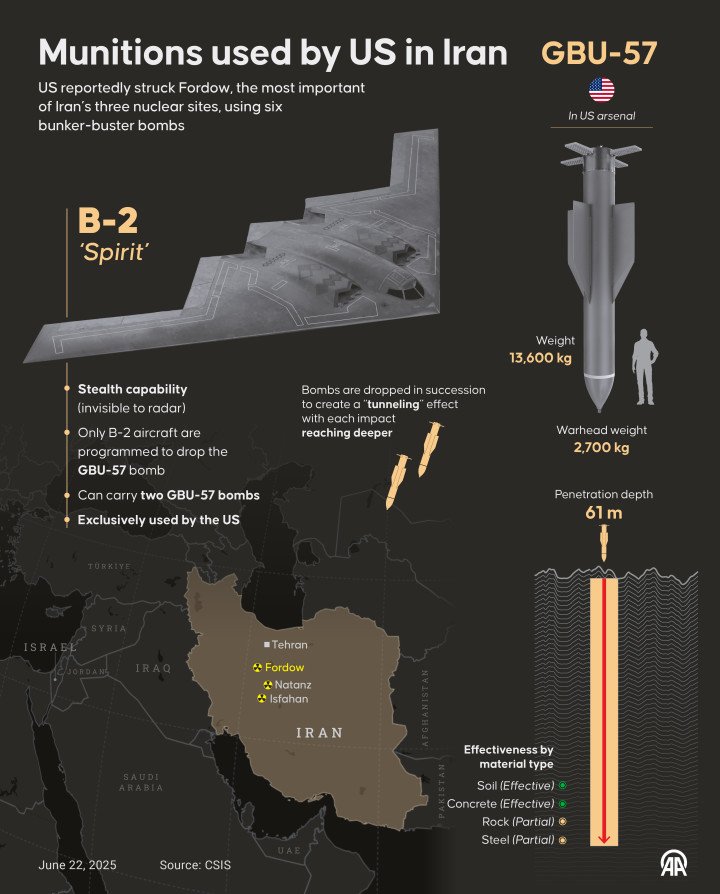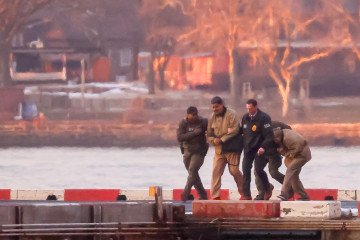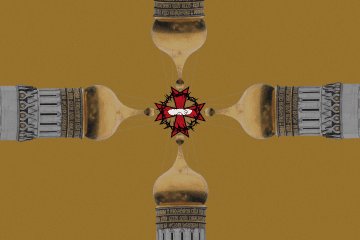- Category
- World
American GBU-57 vs Russia’s "Bunker Busters": Why One Bomb Arsenal Is Light-Years Ahead
-fc2da09a11ee3bf3f197ebaeede25266.jpg)
The US attacked Iran with its deep-penetration bomb, the GBU-57 bunker buster. Does Russia have anything in its arsenal that could match America’s largest precision-guided non-nuclear weapon?
For the first time in history, the US Air Force used the GBU-57A/B Massive Ordnance Penetrator (MOP) “bunker-busting” bombs, launching 14 of them from its B-2 Spirit stealth bombers to strike Iran’s key nuclear sites.
We’re not at war with Iran. We’re at war with Iran’s nuclear program.
US vice-president
The MOP—largest conventional bomb in the US arsenal—was deployed to strike Iran’s most fortified nuclear facilities, including Natanz, Isfahan, and the heavily protected Fordow nuclear site, on the morning of June 22.
-36ecf3ae032b188e3a67450954113aca.jpg)
The US launched its attack after calling for Iran to “stop and eliminate” its expanding uranium enrichment program, reportedly leading the nation dangerously close to nuclear weapon capabilities.
While Tehran denies the allegations, Iran has already been found to secretly expand its missile development program at two sites allegedly linked to nuclear warhead production.
What is the US GBU-57A/B bomb?
The GBU-57A/B Massive Ordnance Penetrator (MOP) is the most powerful non-nuclear weapon in the world, designed to strike deep underground and “destroy our adversaries’ weapons of mass destruction housed in the most fortified facilities,” the US Air Force stated. Only the B-2 Spirit stealth bomber jet can carry and deploy the MOP.
“GBU” stands for “guided bomb unit,” highlighting its advanced precision guidance system using sophisticated wings and onboard technology to hit targets with exceptional accuracy.
Weighing around 13,600 kg (30,000 pounds)—roughly the size of an average city bus—the MOP measures over 6m long and more than 0.5m wide.
It was capable of breaching Iran’s Fordow nuclear site, which lies nearly 100 metres underground inside a mountain and protected by reinforced concrete.
The MOP's shape allows it to penetrate deep through the Earth's surface. The MOP can destroy nuclear targets without causing nuclear fallout, making it a precise and powerful tool in modern strategic warfare.
Its specialized programmable fuze detonates the bomb at the optimal moment, counting through layers of rock and detecting hollow spaces before triggering the explosion.

Just days earlier, Israel launched an airstrike on Fordow but reportedly only damaged surface-level facilities and surrounding air defenses, underscoring the MOP’s unique capability to neutralize deeply buried targets.
Does Russia have any buster bombs?
Russia fields a range of “bunker-buster” bombs designed to penetrate reinforced concrete, command centers, and nuclear facilities. Among these are gravity bombs like the KAB and BetAB series, alongside standoff missiles such as the Kh-59MK2 and Grom.
Russia’s KAB-1500L-Pr weighs approximately 1,500kg and can penetrate 3-5m of concrete. It is typically deployed from Russia’s tactical Su-24 and Su-34 bombers.
In contrast, the BetAB-500ShP is far lighter, weighing around 500kg, with a penetration capability of roughly 1.5m of reinforced concrete. This free-fall, unguided bomb is also launched from Su-24 and Su-34 jets.
Throughout its full-scale war in Ukraine, Russia has repeatedly used these “bunker-busters” against civilian targets.
Between March and May 2022, Russian forces targeted families sheltering beneath Mariupol’s Azovstal steel plant, where an estimated 1,000 civilians, including children, were trapped underground and suffering from deteriorating conditions.
The conditions are not great for kids here...Children’s teeth are getting worse. They’re lacking in vitamin D. There’s no sun.
An unnamed mother hiding with her children in Mariupol
In April 2022, “bunker-buster” strikes partially collapsed the plant and a makeshift operating room, killing Ukrainian soldiers and injuring many others.
Russia has also deployed “bunker-buster” bombs on its own soil. In April 2023, Russian jets accidently bombed Belgorod, a Russian city near the Ukrainian border.
The target was reportedly Ukraine’s city of Kharkiv. Military analysts, Defense Express reports, the weapon used was likely the BetAB-500ShP, which landed just 10m from a Russian residential building.
How do US and Russian bunker buster bombs compare?
The GBU-57 undeniably outclasses Moscow’s “bunker-busters” in size and power by a wide margin. When it comes to penetration, Russia’s BetAB and KAB bombs barely scratch the surface compared to the US deep-strike capability of the GBU-57.
The US B-2 Spirit bomber has an extremely low radar signature, allowing it to strike with the GBU-57 without warning. Whereas Russia’s munitions are launched from aircraft with no stealth, so they are easier to detect and intercept.
Between February 2022 to 2025, Russia has launched more than 51,000 guided aerial bombs onto Ukraine. However, Ukraine has begun intercepting them successfully, such as in Zaporizhzhia on February 7, 2025.
The US struck Iran’s nuclear sites with multiple GBU-57 bombs without any attempt at interception.
The US GBU-57 was incredibly precise, directly striking its targets. Whereas Russia’s BetAB is a free-falling munition without guidance, it has very low precision, even striking a Russian city.
While Russia continues to modernise its arsenal, there are no reports that Russia has, or can develop, a “bunker-buster” comparable to the US MOP. The GBU-57A/B remains unmatched as a deep-penetrating weapon.
-46f6afa2f66d31ff3df8ea1a8f5524ec.jpg)

-29a1a43aba23f9bb779a1ac8b98d2121.jpeg)
-c9be02aad2c169e14ebc2a41d0ba02dc.jpg)
-605be766de04ba3d21b67fb76a76786a.jpg)
-56e0bfa71829348120777fba0ad5ba46.png)

